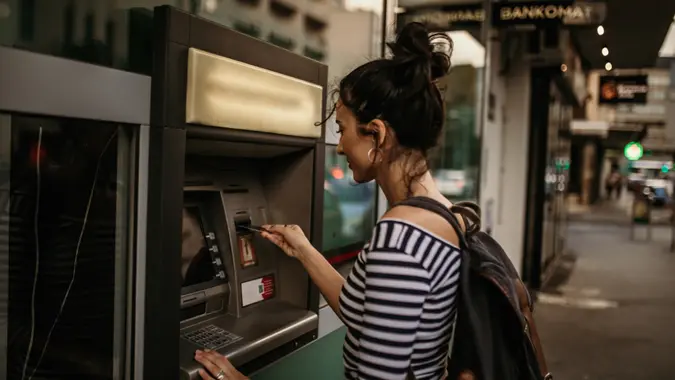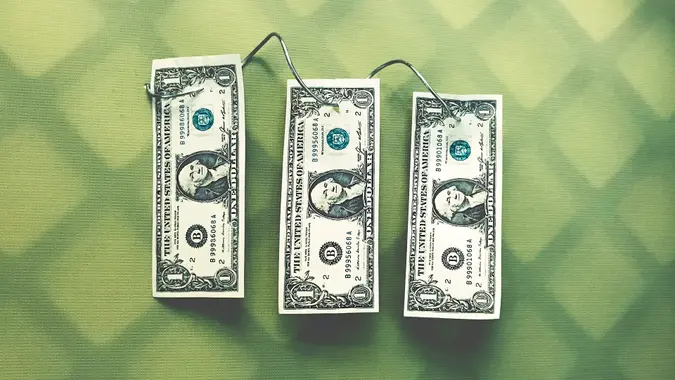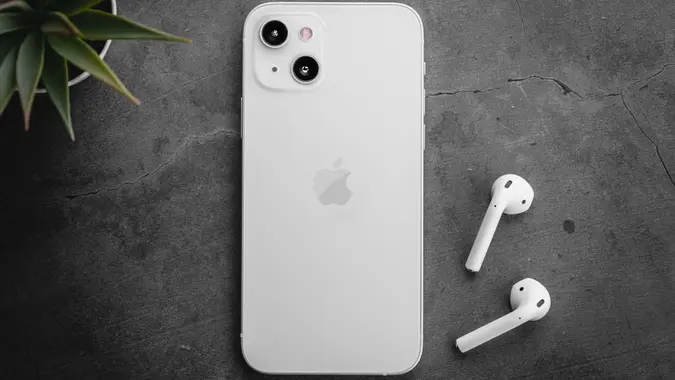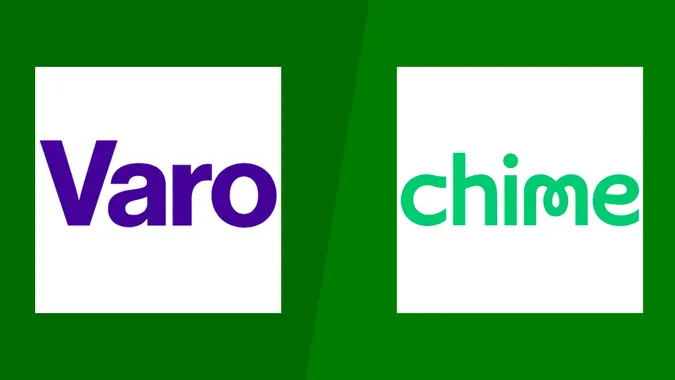Is Plaid Safe? Security, Risks and Benefits Explored

Commitment to Our Readers
GOBankingRates' editorial team is committed to bringing you unbiased reviews and information. We use data-driven methodologies to evaluate financial products and services - our reviews and ratings are not influenced by advertisers. You can read more about our editorial guidelines and our products and services review methodology.

20 Years
Helping You Live Richer

Reviewed
by Experts

Trusted by
Millions of Readers
If you’ve ever linked your bank account to a financial app like Venmo, Robinhood or Cash App, you’ve probably used Plaid without even realizing it. Plaid acts as a bridge between your bank and financial apps, making it easier to connect accounts securely. But that raises an important question: Is Plaid safe?
The short answer is yes — Plaid is designed with strong security measures, including bank-level encryption and multi-factor authentication (MFA). However, it’s natural to be cautious when granting third-party access to your financial data.
This guide breaks down what Plaid is, how it works and whether you should trust it with your banking information.
What Is Plaid?
Plaid is a financial technology (fintech) company that allows apps to connect securely with your bank account. Instead of entering your banking details directly into an app, Plaid acts as a middleman to verify and transmit your information safely.
How Does Plaid Work?
When you link your bank to an app using Plaid:
- You log in to your bank account through the Plaid interface.
- Plaid verifies your banking credentials without storing them.
- It securely shares necessary financial data (e.g., account balance, transaction history) with the app you’re using.
What Apps Use Plaid?
Plaid powers thousands of financial services, including:
- Money Transfer Apps: Venmo, Cash App, PayPal
- Investment Platforms: Robinhood, Acorns, Wealthfront
- Budgeting Tools: Mint, YNAB, Personal Capital
- Cryptocurrency Exchanges: Coinbase, Gemini
- Loan and Credit Apps: SoFi, Chime, Affirm
If you’ve ever linked your bank account to one of these services, Plaid was likely involved in the process.
How Secure Is Plaid?
When it comes to security, Plaid follows bank-level encryption standards, ensuring that your financial data stays safe and private.
Key Security Features of Plaid:
- Bank-Level Encryption – Plaid encrypts all data with Advanced Encryption Standard (AES-256), the same security protocol used by major banks and financial institutions.
- Tokenization of Sensitive Data – Instead of sharing your real banking credentials with third-party apps, Plaid uses tokenization to create a unique identifier that grants limited access to your financial data.
- Multi-Factor Authentication (MFA) Support – Plaid supports multi-factor authentication, adding an extra layer of protection when verifying bank connections.
- Data Minimization – Plaid only shares the information needed for the app to function–your passwords and full account numbers are never stored or visible to the app.
Does Plaid Have Access to Your Banking Information?
Plaid doesn’t see or store your login credentials. Instead, Plaid encrypts your login and sends an authentication token instead of your banking credentials. This access is read-only, meaning Plaid cannot do anything with your money unless you give prior authorization.
Plaid collects limited information like your account details, balances and transaction history. If you authorize a direct payment from Venmo, Plaid collects your account and routing number. If you use a financial planning app or credit monitoring service, Plaid collects loan and credit card information.
Plaid will never collect your Social Security number, your full banking login or password, or non-personal financial data. With the data Plaid does collect, they use strict privacy and security measures. Data encryption, tokenization, user control, limited data sharing and compliance with security laws are all used to protect your sensitive data.
Can Plaid See Your Bank Login Credentials?
No. When you enter your banking username and password through Plaid, your credentials are passed directly to your bank for verification. Plaid does not store or share this information.
Plaid and Consumer Consent
You must explicitly permit Plaid to use your information. When linking Plaid to your bank account information, you have to go through the following steps:
Step 1. Choose your bank – When signing up for an app (Venmo, Robinhood) that uses Plaid, you will be prompted to select your bank.
Step 2. Review Plaid’s data access request – You will read a disclosure that will let you know what Plaid will share with the app. Most likely this will include account balances and type, as well as transaction history.
Step 3. Authenticate with your bank – You will log in through Plaid, which encrypts your credentials and sends a secure authentication token to the app.
Step 4. Approve access – You will explicitly approve that Plaid has consent to link your bank with the app. You can track what specific data is being accessed.
Can you revoke Plaid’s access?
Yes, you can revoke Plaid’s access to your app at any time. If you remove Plaid’s access, they no longer can fetch your banking data. You can disconnect Plaid with three different options — either through Plaid’s portal, your bank or the app.
To disconnect via Plaid’s portal, visit www.plaid.com, view all connected apps and select the app you want to disconnect and remove the account to revoke access.
If you want to remove access via your bank, login to your account. Navigate to “Third-Party Connections” or “Linked Apps” and remove access to Plaid.
Removing access via your financial app is easy. Open the app (Venmo, Robinhood) that uses Plaid, navigate to settings and click on “Linked Accounts.” Select your bank and unlink Plaid.
Is Plaid Safer Than Manual Bank Logins?
Plaid is generally safer than traditional login credentials. With Plaid, your actual banking credentials are not seen. Your login credentials are encrypted, and if you suspect a breach, you can revoke access instantly. Using Plaid reduces risk of phishing and credential theft.
Manually entering your banking credentials into multiple apps increases the risk of hacking or data breaches. Plaid reduces this risk by acting as a secure gateway between apps and your bank.
| Security Feature | Plaid | Manual Bank Login |
|---|---|---|
| Encryption | Yes (AES-256) | No (depends on the app) |
| Tokenization | Yes (no real credentials shared) | No |
| Data Stored | No banking credentials stored | Risk of exposed credentials |
| Fraud Protection | Yes (limited-access tokens) | No additional protection |
By using Plaid instead of entering your bank details into multiple apps, you lower your risk of credential theft and phishing attacks.
How to Protect Your Data When Using Plaid
It’s natural to worry about protecting your data when using Plaid. There are some preventive measures you can take to prevent your information from being exposed.
Let’s take a look at what may work to keep your data protected:
Best practices for managing linked accounts
Keeping your managed linked accounts from being hacked or compromised involves taking a few practical but easy steps:
- Choose a strong password – Make certain your password for your bank and app is unique with numbers and special characters.
- Enable two-factor authentication – Enable 2FA for all your financial accounts and the apps that support them.
- Regularly review your connected apps – Log in to Plaid’s portal to determine what apps are connected. Remove any apps you aren’t currently using.
- Update regularly – Update your phone, apps and financial apps regularly.
How to review and adjust Plaid permissions
You can conveniently review Plaid’s permissions, Simply access the Plaid Control Center on plaid.com, sign in and review the apps that are connected. Review each app and determine what permissions are allowed. You can revoke permissions for Plaid or any other service. You can refresh permissions regularly.
Monitoring financial activity for unauthorized access
There are easy ways to monitor financial activity to determine if your accounts have been compromised. You can set up banking alerts to let you know when unusual activity has occurred on your account. Make a point of reviewing your transactions regularly and pull your credit reports at least once a year from Experian, TransUnion, and Equifax.
Final Thoughts to GO: Is Plaid Safe for Online Banking?
Yes, Plaid is a secure and widely trusted service that uses bank-level encryption, tokenization and authentication to protect your financial data. It is safer than manually entering your bank details into multiple apps.
That said, always review your app permissions, use strong security measures and regularly monitor your bank accounts for any suspicious activity.
If you’re using financial apps that require bank access, Plaid is one of the safest ways to connect your accounts.
FAQs About Plaid
Here are the answers to some of the most frequently asked questions about Plaid:- Is Plaid a bank?
- No, Plaid is not a bank. It is a financial technology company that acts as an intermediary between banks and apps.
- Does Plaid sell my data?
- No, Plaid does not sell your financial data. It only transmits necessary information with your consent.
- How do I remove Plaid from my accounts?
-
You can disconnect Plaid by:
- Logging into your bank account settings and revoking access.
- Managing connections at my.plaid.com.
-
- Is it safe to use Plaid with apps like Venmo and Cash App?
- Yes, Plaid is the industry standard for linking bank accounts securely to apps like Venmo, Cash App, and PayPal.
- What happens if Plaid gets hacked?
- Even in the unlikely event of a breach, Plaid does not store bank login credentials, reducing the risk of fraud.
Information is accurate as of Feb. 19, 2025.
Editorial Note: This content is not provided by any entity covered in this article. Any opinions, analyses, reviews, ratings or recommendations expressed in this article are those of the author alone and have not been reviewed, approved or otherwise endorsed by any entity named in this article.
Our in-house research team and on-site financial experts work together to create content that’s accurate, impartial, and up to date. We fact-check every single statistic, quote and fact using trusted primary resources to make sure the information we provide is correct. You can learn more about GOBankingRates’ processes and standards in our editorial policy.
- Plaid "Plaid"
- Plaid "Why Plaid"
- Plaid "Discover Apps"
- Plaid "Trust and Safety"
- Plaid "How do I disconnect my financial accounts from an app?"
- Plaid "Privacy and Security Policy"
 Written by
Written by  Edited by
Edited by 

























